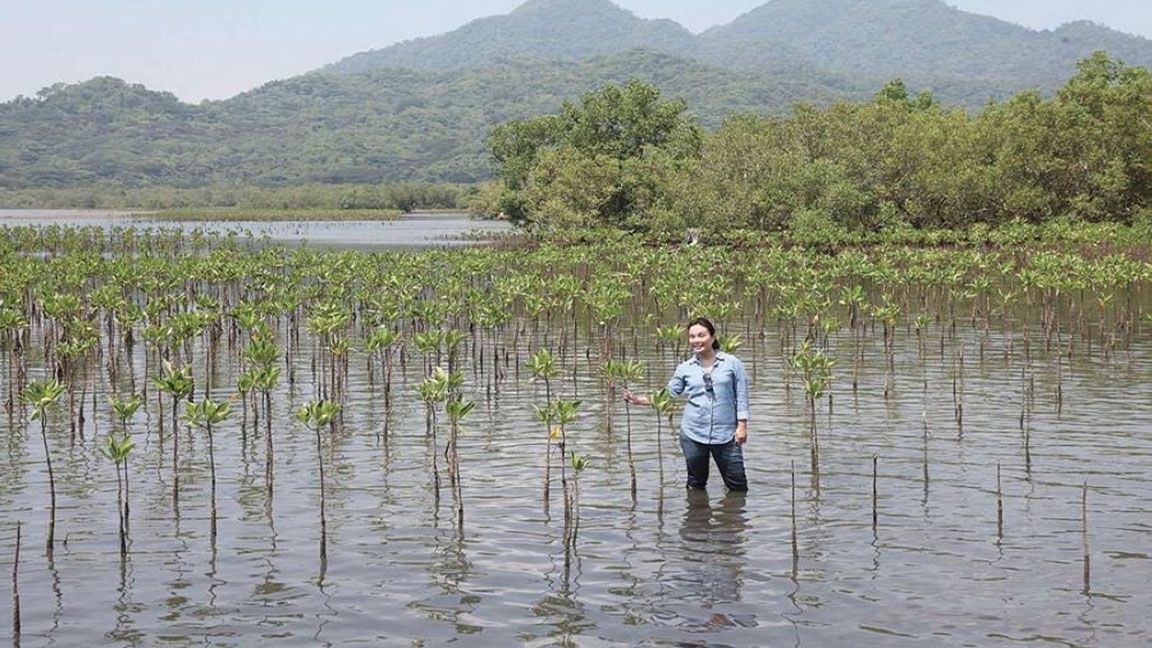Rep. Loren Legarda is touting the benefits of “nature-based” solutions such as mangrove greenbelts in preventing further loss and damage during natural calamities.
INSTEAD of destroying natural landmarks to give way for urban development, government and stakeholders should adopt a “Building with Nature” approach to develop and implement ecosystem-based coastal defense measures alongside existing risk reduction measures, Deputy House Speaker Loren Legarda said.
Particularly, Legarda pushed for the planting and rehabilitation of mangroves along the shorelines of vulnerable coastal communities to serve as natural buffers against climate hazards.
“We have long understood the workings of nature and learning once more from the experience from Typhoons ‘Odette’ and ‘Yolanda’,” the Antique representative and senatorial candidate said in a statement issued Thursday (January 6).
In natural settings, mangroves have effectively protected our most vulnerable communities, lowering the storm surge and dampening the waves within the first few hundreds of meters of forest, she added.
“A mangrove greenbelt of hundreds of meters wide can play a critical role in reducing wind or swell waves, thus reducing erosion, flooding, and storm surges and preventing loss of life and damage to properties.”
Legarda also touted the benefits of “nature-based” solutions such as mangrove greenbelts in preventing further loss and damage during natural calamities.
“Our development plans should support a more extensive planting and rehabilitation of mangroves and recognize them as a fundamental part of the local economy in growing fish population and biodiversity, capturing carbon, and providing forest products and recreation,” she added.
During the onslaught of typhoon “Odette,” which brought torrential rains, violent winds, and storm surges in Surigao del Norte and Dinagat, provinces in Central Visayas, and the island of Palawan, the coastal municipality of Del Carmen in Siargao was miraculously spared from storm surges because it is home to 4,871 hectares of mangroves, the largest such forest in the Philippines.
She added that during supertyphoon “Yolanda,” the world’s deadliest storm in 2013, Barangay Parina in Giporlos, Eastern Samar, was also saved from storm surges by its mangrove forests of nine hectares.
The forest served as the community’s protective cover when water surged inland.
On the other hand, Bacjao, a nearby barangay but located outside the mangrove area, was completely destroyed.
As chair of the Senate Committees on Finance and Climate Change in 2016, then Senator Legarda had pushed for the prioritization and earmarking of funds under the National Greening Program for mangrove reforestation.
Still, Legarda recognizes that there remains a need for a comprehensive and integrated policy on mangroves that could support nature-based and sustainable climate adaptation measures to protect vulnerable communities and their livelihoods from the devastating impacts of extreme weather and disasters.
“We need to invest in nature’s solutions. Integrated coastal zone management will help address the root causes of coastal vulnerability. We need to involve local communities and stakeholder groups in both the design and implementation of zoning plans and management plans. We must provide incentives to the community to act as local custodians of the mangrove forests, or offer climate-resilient livelihoods linked to the management of the greenbelt,” Legarda said.
Tags: #climatechange, #naturalcalamities, #naturebasedarchitecture, #disasterriskreduction, #LorenLegarda
